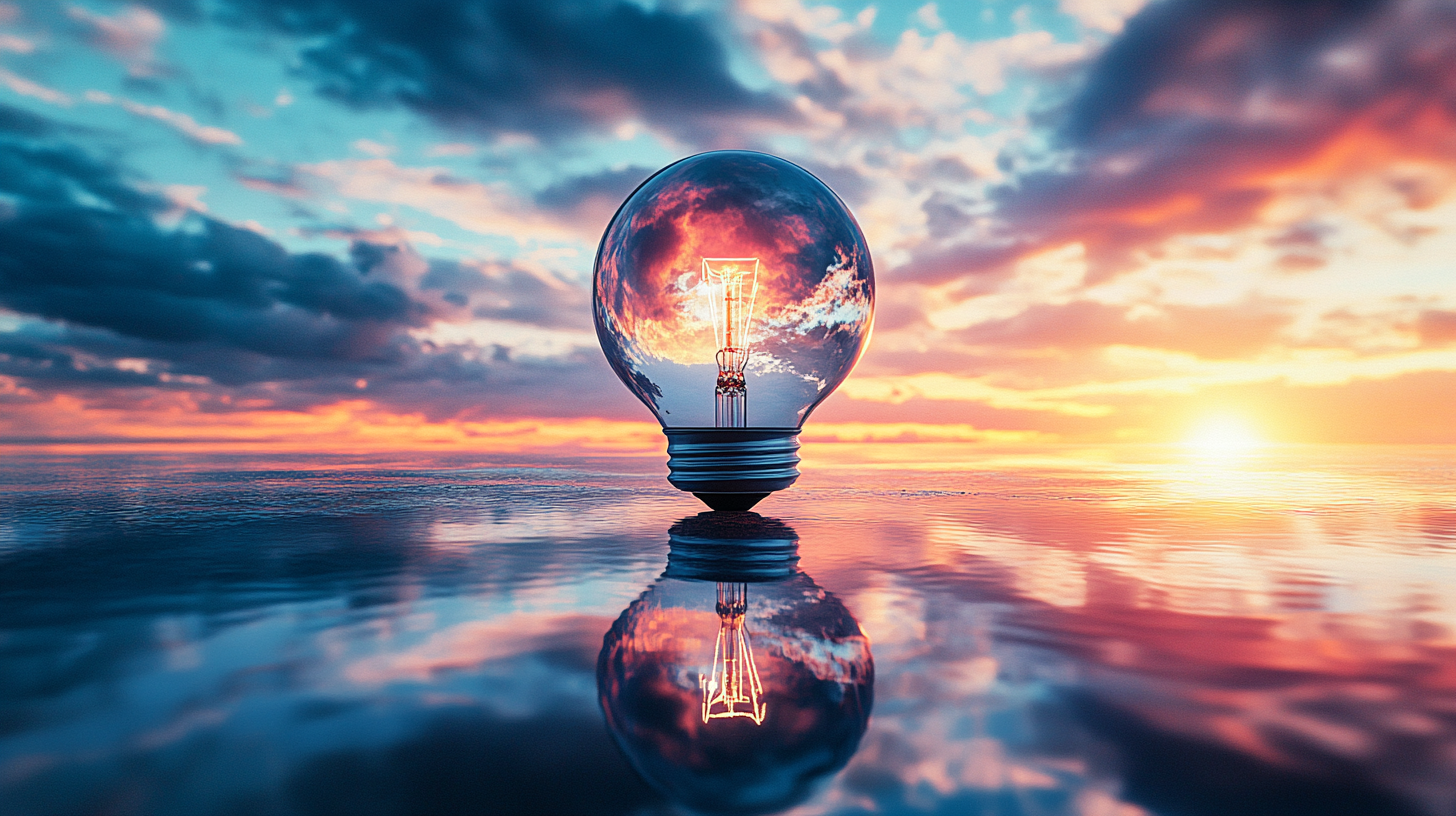Global Market Insights for Led Bulbs in 2025 Navigating Trends and Opportunities
As the world shifts towards sustainable lighting solutions, LED bulbs have emerged as a frontrunner, revolutionizing both residential and commercial lighting markets. According to a recent report by Fortune Business Insights, the global LED lighting market is expected to reach USD 105.5 billion by 2027, growing at a compound annual growth rate (CAGR) of 13.5% from 2020 to 2027. This growth is significantly driven by the increasing demand for energy-efficient lighting solutions, coupled with stringent government regulations aimed at reducing carbon emissions. The advantages of LED bulbs, such as longer lifespan, lower energy consumption, and declining costs, are enticing consumers and businesses alike to make the switch.
In 2025, navigating the trends and opportunities in the LED bulb market will be crucial for manufacturers and stakeholders. The International Energy Agency (IEA) projects that LED lighting could account for over 70% of the total global lighting market by 2030, reflecting a marked transition in consumer preferences. As advancements in smart lighting technologies and sustainable practices continue to shape the landscape, industry players must stay attuned to these developments. This blog will explore the emerging trends, challenges, and opportunities within the LED bulb market, positioning readers to capitalize on the promising future of energy-efficient lighting solutions.

Emerging Trends in LED Bulb Technology for 2025
As we approach 2025, the trends emerging in LED bulb technology are set to revolutionize how we approach lighting in our homes and businesses. One of the most significant trends is the integration of smart technology in LED bulbs. These advanced bulbs not only offer energy efficiency but are also equipped with features like remote control, customizable color temperatures, and programmable settings that cater to the evolving demands of modern lifestyles. With the ongoing shift towards smart homes, consumers are increasingly looking for seamless integration with home automation systems, making LED bulbs more versatile than ever. Additionally, sustainability remains at the forefront of LED bulb development. Manufacturers are prioritizing eco-friendly materials and energy-efficient designs to reduce their carbon footprints. This focus on sustainable practices aligns with the global move towards greener technologies, encouraging consumers to invest in products that offer longevity and lower energy consumption. The adoption of recyclable and biodegradable materials in LED production is particularly noteworthy, as it reflects a growing awareness of environmental impact among both consumers and manufacturers. Finally, the aesthetic appeal of LED bulbs is enhancing their appeal across various demographics. With a myriad of design options available—from vintage filament styles to sleek, modern appearances—LED lighting is no longer confined to functional roles. Designers are increasingly incorporating LED solutions to create stunning visual effects and layers of light, transforming spaces and elevating interior design trends. As we move towards 2025, it's clear that the LED bulb market is poised for significant growth, driven by innovation, sustainability, and aesthetic considerations.

Market Drivers: Sustainability and Energy Efficiency in LED Lighting
As the world increasingly prioritizes sustainability, the LED lighting market is poised for significant growth by 2025. The focus on energy efficiency and eco-friendly solutions drives the demand for LED bulbs, which are not only cost-effective but also contribute to reducing carbon footprints. The LED driver market alone is projected to surpass $14.5 billion in 2023, with an impressive compound annual growth rate (CAGR) of over 15.5% anticipated from 2024 to 2032. This surge can be attributed to a rising consumer preference for energy-saving lighting options, as well as government initiatives supporting sustainable technologies.
Moreover, the integration of artificial intelligence (AI) into intelligent lighting systems marks a noteworthy trend within the industry. AI-powered adaptive lighting, capable of adjusting brightness based on human behavior and environmental conditions, enhances user experience while optimizing energy usage. This innovative approach not only appeals to environmentally conscious consumers but also aligns with the development of smart cities and homes, facilitating an era where lighting is seamlessly integrated into the urban infrastructure.
In addition to residential applications, the outdoor LED display market is also witnessing substantial growth, driven by rising digital advertising demand. As brands seek to engage consumers in more dynamic ways, the use of LED displays becomes increasingly prominent. With an expected CAGR exceeding 10% from 2024 to 2032, the outdoor LED segment highlights the versatility and adaptability of LED technology across different sectors, further reinforcing the importance of sustainability and energy efficiency in lighting solutions.

Regional Analysis: Key Markets for LED Bulb Growth
The global LED bulb market is poised for substantial growth in 2025, driven by a variety of regional dynamics that present unique opportunities and challenges. In North America, energy efficiency regulations continue to propel the adoption of LED technology in residential and commercial sectors. Initiatives aimed at reducing carbon footprints have encouraged consumers and businesses alike to invest in LED solutions, spurring demand that is expected to accelerate in the coming years.
In contrast, the Asia-Pacific region stands as a burgeoning market for LED bulbs, primarily due to urbanization and increased infrastructure spending. Countries like India and China are witnessing rapid development, leading to a higher demand for energy-efficient lighting solutions. Government incentives and lower production costs are further enhancing the attractiveness of LED bulbs, making them the preferred choice for both new constructions and retrofitting projects.
Europe remains a robust player in the LED bulb landscape, characterized by its stringent environmental regulations and focus on sustainability. As European countries transition towards greener technologies, LED lighting offers an ideal solution that meets both regulatory requirements and consumer demands for energy-efficient products. The ongoing shift toward smart lighting systems also opens up avenues for advanced LED bulbs that integrate seamlessly with the growing trend of smart homes and cities.
Africa and Latin America are emerging markets where LED bulb adoption is gaining momentum. In these regions, the growing awareness of energy efficiency, coupled with declining costs of LED technology, is expected to drive significant market growth. Local initiatives aimed at electrification and improving access to reliable lighting solutions are creating fertile ground for LED technology, positioning these regions as important players in the global market by 2025.

Opportunities in Smart Lighting Solutions and Connectivity
As we look forward to 2025, the landscape of LED bulbs is evolving significantly, particularly with the rise of smart lighting solutions and enhanced connectivity. According to the latest market research, the global smart lighting market is projected to reach $78.4 billion by 2025, growing at a CAGR of approximately 25% from 2020 to 2025. This growth is driven by the increasing demand for energy-efficient lighting solutions and the need for enhanced energy management systems in residential and commercial settings.
The integration of smart technology into LED bulbs has opened up numerous opportunities for manufacturers and consumers alike. Smart bulbs not only offer traditional benefits such as energy savings but also introduce capabilities like remote control, scheduling, and automation via IoT connectivity. According to a report by Fortune Business Insights, the adoption of smart bulbs is expected to increase significantly, with an estimated market share of around 35% within the overall lighting industry by 2025. This trend underscores a shift towards creating more intuitive and personalized lighting experiences.
Furthermore, advancements in connectivity technologies, such as Zigbee and Wi-Fi, are facilitating the seamless operation of smart lighting solutions. The growth of smart home systems is also influencing consumer preferences, with a noticeable increase in the purchase of LED bulbs equipped with smart features. Data indicates that over 50% of consumers expressed interest in integrating smart lighting into their homes, signaling a robust market opportunity for companies investing in this segment. With the convergence of energy efficiency and smart technology, the LED bulb market is set for transformative growth that benefits both consumers and the environment.
Competitive Landscape: Major Players and Innovations in LED Bulbs
The LED bulb market is poised for significant growth as innovations and competitive strategies shape the landscape. Major players in this sector are constantly pushing boundaries, introducing advanced technologies that enhance efficiency and sustainability. Companies like Philips, Osram, and GE are investing heavily in research and development to create smarter lighting solutions that cater to evolving consumer needs. Innovations such as smart LED bulbs that integrate seamlessly with home automation systems are gaining popularity, offering users increased control over their lighting environment.
In addition to technological advancements, the competitive landscape is characterized by strategic partnerships and acquisitions aimed at expanding market reach. For instance, collaborations between lighting manufacturers and tech companies are driving the development of IoT-enabled LED products, making it easier for consumers to personalize their lighting experiences. Moreover, emerging players are entering the market with unique propositions, focusing on energy efficiency and eco-friendly materials, which resonate with environmentally conscious consumers.
As the market evolves, sustainability remains a key theme. Companies are not only highlighting energy savings but also exploring circular economy principles, such as recyclable packaging and longer product lifespans. The integration of energy-efficient practices into production aligns with global sustainability goals, presenting opportunities for brands to differentiate themselves in a crowded marketplace. As 2025 approaches, innovations in LED technology will continue to reshape consumer preferences and drive competitive dynamics.


